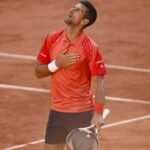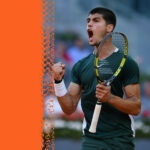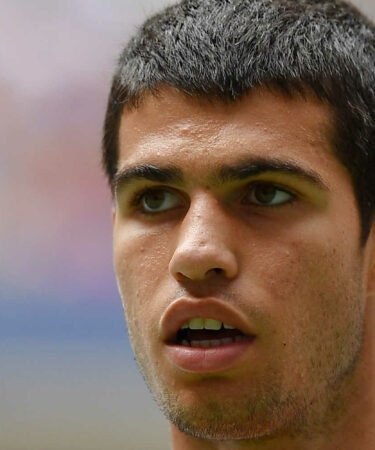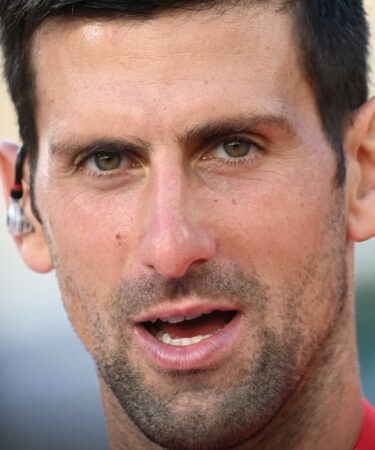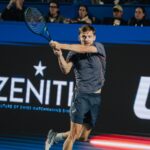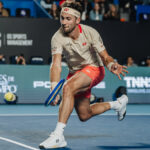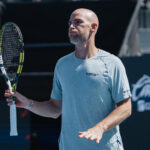Djokovic-Alcaraz: A battle to conquer the smallest of margins
Novak Djokovic and Carlos Alcaraz were separated by a hair’s breadth (6-7, 7-5, 7-6 for Alcaraz at the 2022 Madrid Masters in 2022) in their first meeting. What will separate them when they clash again in the semi-finals of the French Open?
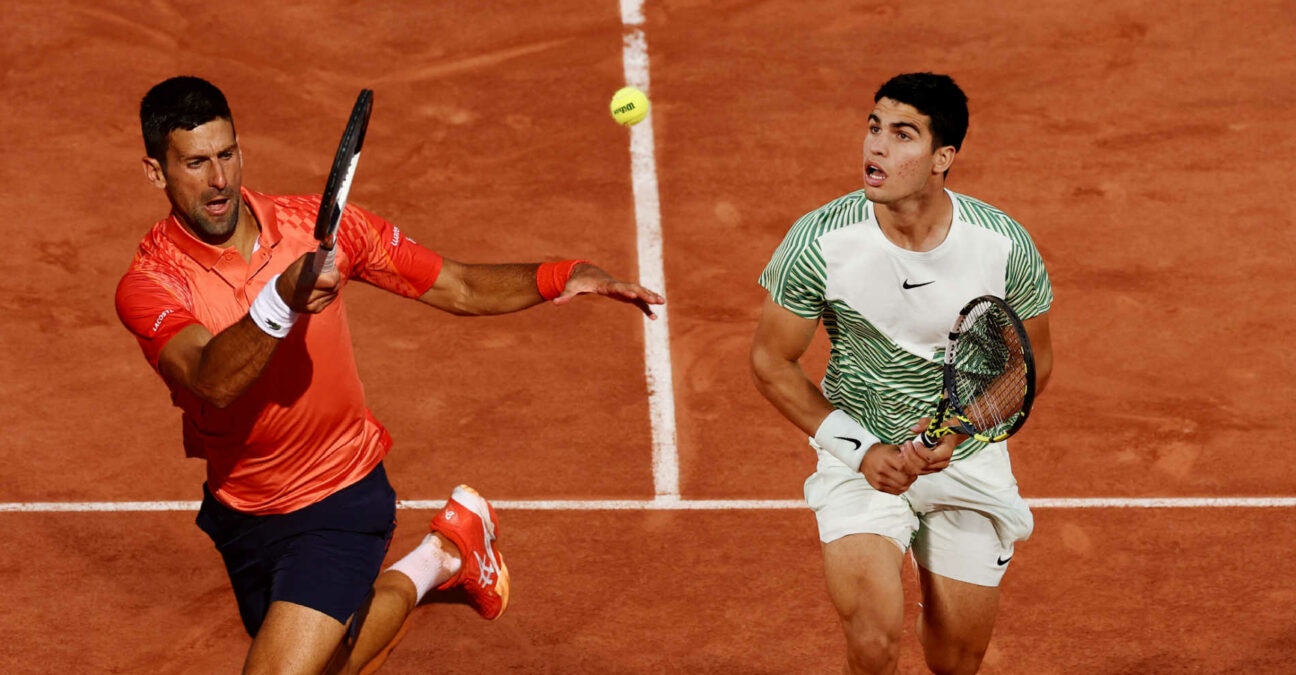
If a screenwriter had wanted to write this story, he would have been banned for unbridled fantasy.
By an unlikely set of circumstances, the two best tennis players in the world — Carlos Alcaraz and Novak Djokovic — have avoided each other for more than a year. They have won the last three Grand Slams and the Nitto ATP ATP Finals between them and have exchanged the No 1 ranking since September of 2022. But this 2023 Roland-Garros marks just the second time they have faced each other on the court.
An Alcaraz-Djokovic match in the semi-finals at Roland-Garros is as exciting as it is unknown. The only meeting they have squared off was 13 months ago in Madrid (in the semi-finals, too), and it feels like an eternity. There is a big difference between the Alcaraz who was then still a teenager and the Alcaraz who crushed Stefanos Tsitsipas in the quarter-finals on Wednesday. There is also a difference for Djokovic, who failed to defend his 2021 French Open title in the aftermath of his Madrid loss but went on to win Wimbledon, the Nitto ATP Finals and the 2023 Australian Open. At 36 years old, though, Djokovic is being put in the underdog role on Friday.
Madrid 2022: Alcaraz won after three hours and 26 minutes
We have good reason to hope that we witness one of the high points of tennis in Friday’s match. Like in Madrid last spring (6-7, 7-5, 7-6 for Alcaraz after three hours and 26 minutes), it should be a huge physical and mental fight. Both sides are well prepared. Juan Carlos Ferrero, Alcaraz’s coach, recalled without the slightest embarrassment — in the wake what his protege had to say in Miami — the deep conviction of Alcaraz that he could surpass the record number of Grand Slams won. Djokovic announced earlier this week that he is ready to run a marathon until the last drop of sweat.
In these extremes where the head and the legs decide the last points more than tactical intelligence, the question of the tennis balance of power between the two men remains open. Djokovic and Alcaraz were absolutely discreet about their respective tactical options. Also, it is necessary to read into their previous matches during this tournament and into the data of their semi-final in Madrid to decipher what will likely dictate the outcome of this semi-final showdown.
The question of the right level of aggressiveness will be the first one proposed to the two men, just as it was in their 2022 encounter. The Spaniard has indicated that his persistence to play with aggression was the key to his Madrid win. Also, the way in which Alcaraz throughout this Roland-Garros event has pummeled his opponents with blows from the opening point poses two questions for Djokovic.
Djokovic-Alcaraz: A new, supreme duel on clay
Djokovic’s first test will involve his ability to block balls back in play and to be at the top of his defensive skills in order to minimize the impact of Alcaraz’s offensive shots. The Spaniard is vulnerable when time is taken away from him and he is somehow forced into a situation of overplaying, as Jannik Sinner manages to accomplish against him on a regular basis. Not retreating too far behind the baseline is a second necessity for the Serb, who will have to be the first attacker to prevent the Spaniard from gaining offensive confidence.
With Rafael Nadal’s withdrawal, this Djokovic-Alcaraz matchup is in a way the supreme duel on clay. At Roland-Garros in 2023, these two men sit at the top of the statistical chart in terms of points won from the baseline (56 percent for Alcaraz and 55 percent for Djokovic). Whoever falls below this percentage will likely be the loser — unless the match turns into an unexpected net rush (Djokovic has won 77 percent of his net points; Alcaraz has won 67 percent).
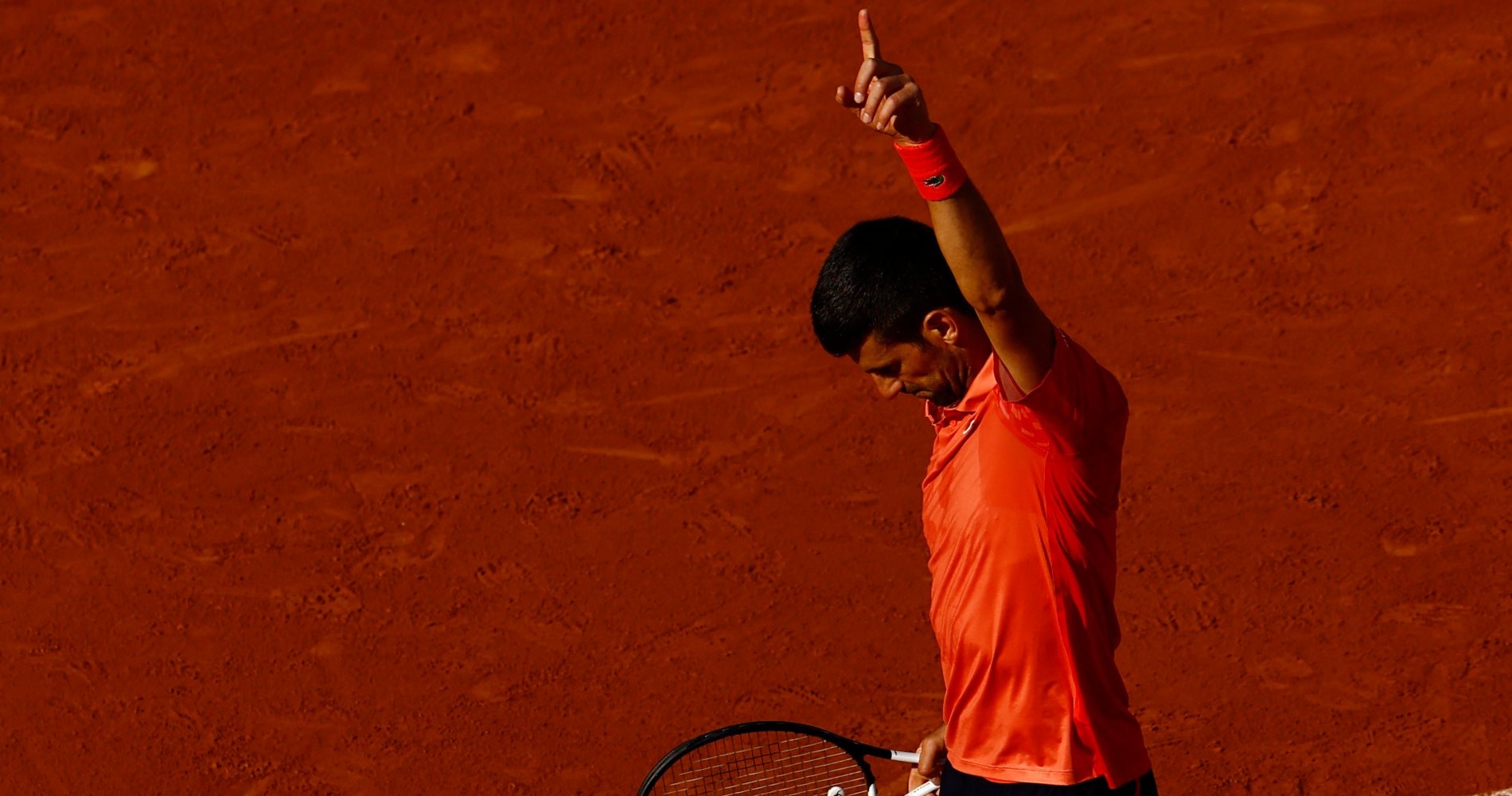
Serves and returns
In 2022, Djokovic’s level of aggression had been relatively average for most of the encounter before growing considerably in the third set — forcing Alcaraz to defend with his slice. But the duration of the match ended up getting the better of Djokovic’s boldness. As the Serb’s length deteriorated, Alcaraz was able to get more into the court and put a lot of pressure on his opponent’s serve to edge out the tiebreak.
This question of the right aggressiveness assumes that neither of the two men gives up too much ground at the start of a point. This match features a player whose serve is not yet his strong suit (especially the second serve of Alcaraz) and the best returner of all time (Djokovic). The Serb will have to serve big, especially since Alcaraz has been able to get the upper hand with his return throughout this fortnight. Alcaraz has won 52 percent of his return games (compared to 39 percent for Djokovic), 46 percent of the points on the opponent’s first serve (42 percent for Djokovic) and 59 percent on the second serve (55 percent for Djokovic). This semi-final is one of those matches where Djokovic will have to show that he is an underrated server.
In Madrid, Alcaraz decided to focus on serving to Djokovic’s backhand whereas the veteran varied his serve placement to the extreme — especially in the second set — in order to create uncertainty. It almost paid off, with a very clear deterioration in the Spaniard’s stats on the return at the start of the third set. Having stabilized his position in return — 2.5 metres behind the line on the first serve and a few centimeters inside for the second — finally helped him to secure the upper hand. For his part, Djokovic had to admit that he was never really able to solve Alcaraz’s kick serve out wide.

Tennis in an unknown zone
Analyzing the rallies of their Madrid duel says less about the game patterns on which they can rely against each other than it does on their mutual search for adapting to an exceptional opponent in every sense of the word.
Alcaraz and Djokovic will now embark on one of those rare opportunities to push their limits. Alcaraz may have more aces up his sleeve today and a body that seems to be in a position to go as far as necessary. But beating Djokovic over five sets is — almost whatever the situation — about finding solutions to whatever problems that can arise during Grand Slams, whatever their nature. Of course, something else has changed since 2022: Alcaraz has become excellent in this “other sport” when tennis is played over five sets.
If neither player imposes his authority in three sets, Alcaraz and Djokovic can take tennis to the unknown zone, as the Serb did against Nadal in the 2021 Roland-Garros semi-finals in 2021 and as Alcaraz did in the 2022 US Open quarter-finals against Sinner.
Get ready to find out!
